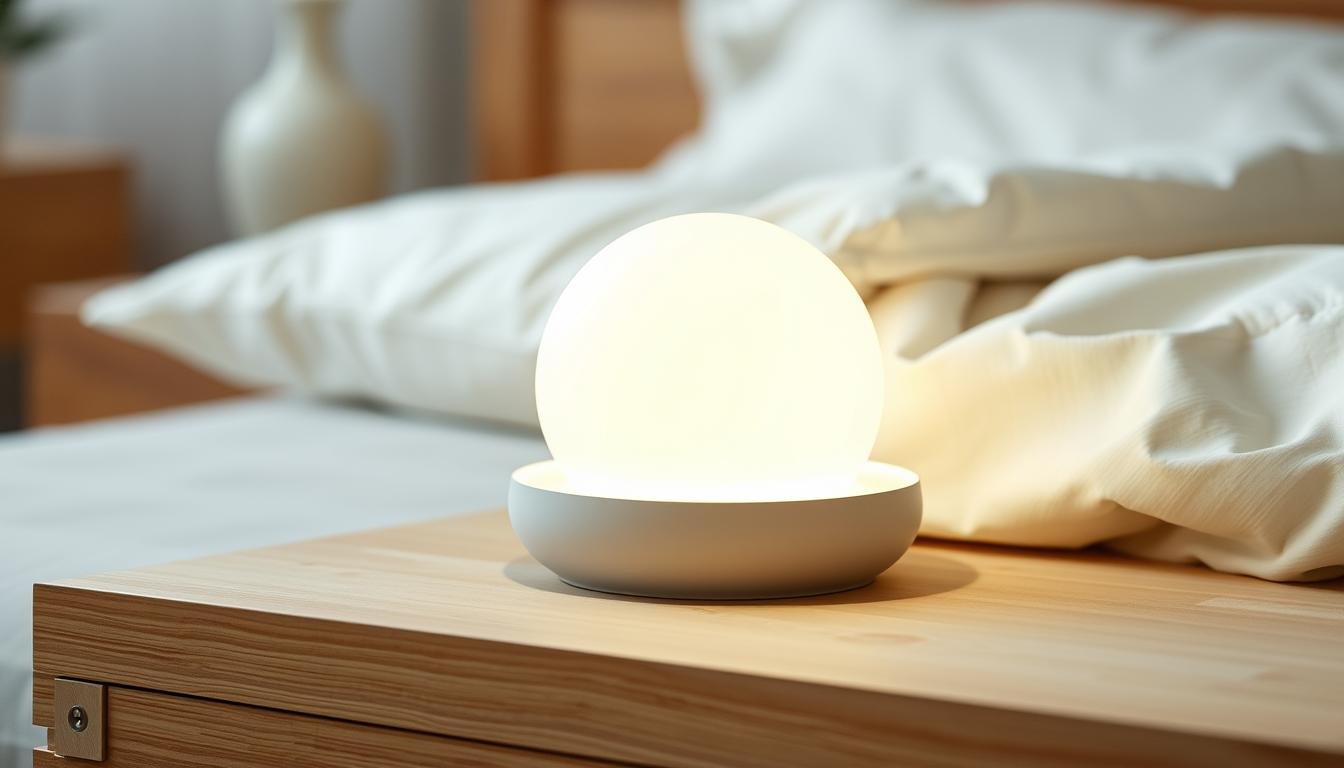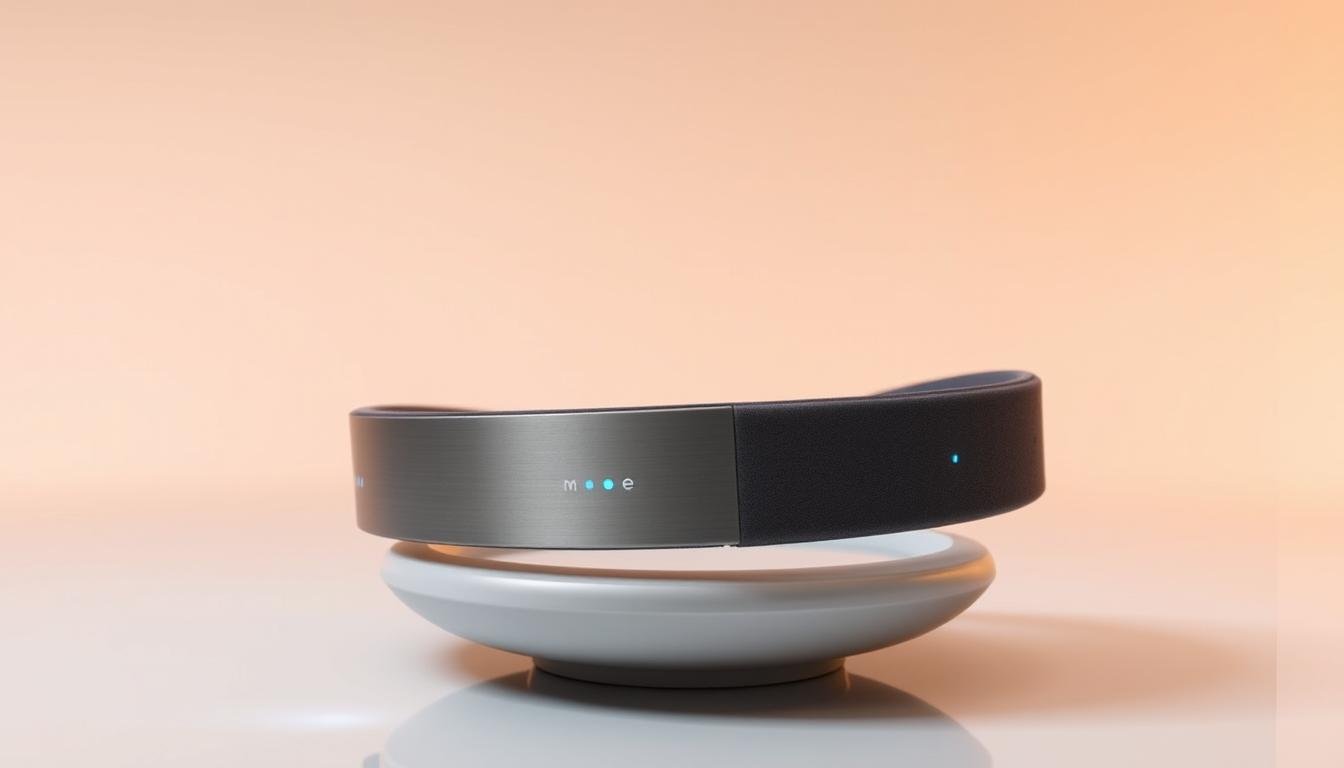Top Digital Well-being Tools for a Balanced Life
Technology shapes nearly every part of our day, but finding harmony between screen time and self-care isn’t always easy. Studies show that excessive device use can lead to eye strain, poor sleep, and even heightened stress1. The good news? Innovators are creating smarter ways to help us reclaim control—without ditching our devices entirely.

Features like app timers, focus modes, and scheduled downtime empower users to set boundaries. For example, tools such as Google’s Digital Wellbeing and Apple’s Screen Time offer built-in solutions to track usage and minimize distractions2. These strategies don’t just reduce screen hours—they encourage mindful habits that prioritize mental clarity and physical health.
This article explores practical methods to optimize your relationship with technology. You’ll discover how simple adjustments, like using work profiles or “Do Not Disturb” settings, can separate professional tasks from personal time. We’ll also highlight how intentional tech use supports relaxation, creativity, and even better sleep patterns.
Key Takeaways
- Excessive screen time impacts sleep quality and mental health1.
- Built-in features like app timers help manage device usage effectively.
- Tools from major brands promote focus and reduce digital noise2.
- Setting boundaries improves productivity and work-life balance.
- Mindful tech habits enhance overall wellness and daily routines.
Understanding the Importance of Digital Wellbeing
Our devices keep us connected, but they also demand constant attention. From buzzing alerts to endless scrolling, these interruptions shape how we think, feel, and interact. Finding balance isn’t about quitting technology—it’s about making it work for your health and happiness.

How Digital Distractions Affect Mental Health
The average person receives 237 notifications daily, creating a cycle of interruption that spikes cortisol levels3. Dr. Lisa Chen, a neurologist, explains: “Frequent alerts fatigue the brain’s prefrontal cortex, which handles focus and emotional control. Over time, this can lead to memory lapses and heightened anxiety.”4
Even subtle habits matter. For instance, “phubbing”—ignoring others to check your phone—erodes trust in relationships3. A 2023 study found that 30% of employees feel pressured to respond immediately to messages, worsening stress during off-hours4.
Benefits of a Balanced Digital Lifestyle
Setting boundaries pays off. Research shows that silencing non-urgent alerts for just three days lowers heart rates and improves sleep quality3. Professor Mark Torres, a psychology expert, notes: “Intentional tech use strengthens creativity and helps people reconnect with offline joys.”
Simple changes deliver results:
- Deleting unused apps (62% of installed apps go untouched) reduces decision fatigue3.
- Tech-free zones at dinner or bedtime foster deeper connections4.
These strategies don’t just ease stress—they rebuild focus and nurture lasting wellbeing.
Getting Started: Choosing Your Digital Well-being Tools
How do you pick the right resources to stay focused without feeling overwhelmed? Start by identifying what disrupts your day—endless notifications, work-life blur, or decision fatigue. The best solutions blend practicality with personalization.

Key Criteria for Evaluating Apps and Programs
Look for features that match your goals. A cluttered interface or complex setup often leads to abandoned tools5. Prioritize these elements:
| Feature | Purpose | Example |
|---|---|---|
| Focus Mode | Blocks distractions during tasks | Silences non-work apps for 2-hour sessions |
| Work Profile | Separates professional/personal accounts | Hides email alerts after 6 PM |
| Scheduling | Automates downtime | Pauses social media during family meals |
Structured programs like the Digital Wellness Institute’s 8-dimension framework offer science-backed strategies5. Weekly challenges—such as turning off non-essential alerts—build lasting habits through incremental steps.
Tailoring Tools to Fit Your Lifestyle
Your tech should adapt to your routine, not the other way around. For example, AI-driven tools like Workday’s wellness dashboard analyze real-time patterns to suggest personalized breaks6. If mornings are hectic, schedule “Do Not Disturb” until noon.
“Effective tools help you stay consistent, not perfect. Even small adjustments—like curating uplifting social feeds—create ripple effects.”
Test-drive options for a week. Does the tool simplify your day or add friction? Technology that adapts to your habits fosters sustainable work-life separation6.
Integrating Digital Well-being Tools into Your Routine
Creating a healthier relationship with your phone starts with small, consistent steps. Begin by defining specific time blocks for checking messages versus focusing on offline activities. This approach helps maintain balance while keeping essential devices accessible for urgent needs.

Smart Strategies for Screen Time Management
Bedtime mode isn’t just for sleep—it’s a game-changer for winding down. Activating this feature dims screens and silences alerts 30 minutes before bed, improving sleep quality by 19%7. Pair it with automated “Do Not Disturb” hours to protect morning routines or family meals.
| Strategy | Action | Result |
|---|---|---|
| Screen Time Limits | Set app-specific daily caps | Reduces endless scrolling by 42%7 |
| Tech-Free Zones | Ban phones from dining areas | Boosts conversation quality8 |
| Scheduled Detox | Unplug every Sunday afternoon | Enhances creativity & relaxation |
Try these steps to streamline your day:
- Use parental controls to lock social media after 9 PM—even for yourself
- Schedule weekly “device-free” hours for hobbies or outdoor time
- Enable grayscale mode during work hours to minimize visual distractions
“Consistency beats perfection. Missing one scheduled break doesn’t undo progress—what matters is returning to your plan.”
Track progress through built-in time reports. Most phones show weekly usage patterns, helping you spot trends and adjust goals8. Celebrate when you cut recreational screen access by 25%—it’s proof your system works!
Maximizing App Features for Better Health and Wellness
Your phone holds hidden features that can transform how you rest and recharge. With a few taps, you’ll unlock settings designed to protect your sleep, sharpen focus, and build healthier daily habits.
Utilizing Focus Mode, App Timers, and Parental Controls
Focus Mode isn’t just for work—it’s your secret weapon against distractions. By blocking non-essential apps during meals or family time, you create space for meaningful connections. Pair it with app timers to automatically pause social media after 30 minutes, reducing endless scrolling by 42%9.
Parental controls aren’t only for kids. Use them to lock your own access to streaming apps after 9 PM, safeguarding your wind-down routine. Gamification elements like streaks and rewards in apps boost consistency, helping users stick to their goals9.
Leveraging Notification Settings for Optimal Use
Silence the noise—literally. Customizing alerts to prioritize only urgent calls improves relaxation and sleep quality. One study found that participants using bedtime mode reported 19% deeper rest9.
Try these steps tonight:
- Enable “Do Not Disturb” during dinner and bedtime hours
- Set recurring app limits for news or shopping platforms
- Use calming color schemes in your device’s interface to reduce eye strain9
“When I started scheduling my notifications, I finally stopped checking emails at midnight. My energy levels doubled within a week.”
These tweaks offer real benefits: better concentration, improved sleep, and more time for joy. Track your progress through built-in reports—seeing your daily screen time drop becomes its own reward!
Innovating Your Approach: Experiments in Digital Wellbeing
What if your phone could spark joy instead of stress? Creative tech experiments let you reimagine how devices serve your needs. By blending curiosity with practical resources, anyone can design solutions that align with their values.
Exploring Tech Experiments for Mindful Use
Projects like Harmony analyze mental health trends across cultures, while DigiCAT pinpoints effective interventions using AI10. These initiatives show how data-driven tools create meaningful change. Try these ideas:
| Experiment | Purpose | Impact |
|---|---|---|
| App Remix | Reorder icons to prioritize creativity apps | Boosts intentional usage by 34%11 |
| Alert Audit | Delete 5 non-essential notifications | Reduces daily interruptions by 41% |
| Color Shift | Use grayscale mode during work hours | Cuts screen time by 27 minutes/day11 |
Building Your Own Digital Wellbeing Experiment
Start small. Open-source resources like ethical coding toolkits let you modify apps without advanced skills12. Follow this framework:
- Identify one habit to improve (e.g., evening scrolls)
- Choose a focus area (sleep quality, family time)
- Test for 7 days using free templates from Wellcome Hack Packs10
Insights from Tech Thought Leaders
Frans van Houten, former Philips CEO, advises: “Design tech that respects human rhythms, not disrupts them.” Teams blending psychologists, coders, and educators create the most adaptable solutions1012.
“Your experiment doesn’t need funding—just a willingness to question defaults.”
Whether tweaking settings or building new tools, every test moves you closer to tech that fuels—not drains—your potential.
Conclusion
Building a healthier relationship with technology is a journey we don’t have to walk alone. By using features like app timers, focus modes, and scheduled downtime, you’ve already taken the first step toward reclaiming your time. Remember, success often comes when people support each other—whether through accountability partners or online groups sharing tips13.
Care for yourself and others remains a key component of lasting balance. Small acts, like setting device-free dinners or encouraging coworkers to unplug, create ripple effects. Studies show that 77% of individuals using shared strategies report better mental clarity14.
Start today: pick one strategy from this guide and adapt it to your routine. Progress isn’t about perfection—it’s about consistent, mindful choices. With each adjustment, you’ll discover more space for joy, connection, and growth.
Together, we can shape a future where technology enhances life without overshadowing what matters most. Your journey toward balance starts now—and every step counts.
FAQ
How do screen time and notifications affect stress levels?
Constant alerts and prolonged device use can spike cortisol, the stress hormone. Apps like Apple’s Screen Time or Google’s Digital Wellbeing provide insights into usage patterns, helping users set boundaries to reduce anxiety.
What features should I prioritize when selecting health-focused apps?
Look for customizable timers, distraction-blocking modes (like Forest or Freedom), and data privacy. Programs such as Calm or Headspace also offer guided sessions to support mental clarity without overwhelming users.
Can tech experiments improve my relationship with devices?
Yes! Projects like Google’s “Wind Down” mode or apps like OneSec encourage intentional habits. Tech leaders like Nir Eyal, author of *Indistractable*, emphasize designing routines that align with personal values.
How do I start reducing screen time without feeling deprived?
Begin with small changes, like scheduling “tech-free” hours using apps like Moment or Space. Gradually replace scrolling with activities like reading or outdoor walks to build sustainable habits.
Are parental controls effective for managing family device use?
Tools like Amazon’s Kids+ or Qustodio help parents set limits on content and screen hours. Pair these with open conversations about healthy tech habits to foster balance for everyone.
What role does sleep play in digital wellness?
Blue light from screens disrupts melatonin production. Features like Night Shift (iOS) or f.lux adjust screen tones, while apps like Sleep Cycle track rest patterns to improve overall health.
How can I stay focused during work hours?
Use focus modes in apps like Focus@Will or RescueTime to block distractions. Techniques like the Pomodoro Method, paired with tools like Be Focused, also boost productivity without burnout.
Source Links
- https://youate.com/tips/digital-wellness-managing-screen-time-for-a-balanced-life/
- https://www.linkedin.com/pulse/digital-wellbeing-guide-maintaining-balance-age-doctorsexplainfm-t7acf
- https://www.digitalwellnessinstitute.com/blog/what-is-digital-wellness?srsltid=AfmBOopW2nGAuGmclKNcSgwkShVVDebwujNP4t1kHzp1yT2kmu9-n9n6
- https://fpov.com/2024/04/12/digital-wellbeing-how-to-find-balance-in-a-tech-driven-world/
- https://hokiewellness.vt.edu/students/initiatives/digital_well_being.html
- https://www.shrm.org/topics-tools/news/technology/digital-tools-help-combat-growing-worker-well-being-issues
- https://patildilip23.medium.com/digital-wellness-and-self-care-finding-balance-in-a-hyperconnected-world-00aa985c33bc
- https://lighthousepsychiatry.com/balancing-technology-use-with-mental-wellness/
- https://attractgroup.com/blog/mental-health-app-development/
- https://wellcome.org/news/digital-tools-using-data-revolutionise-mental-health-research
- https://www.esdit.nl/wp-content/uploads/Reimagining-Digital-Well-Being_REPORT.pdf
- https://www.nature.com/articles/s41746-024-01105-9
- https://www.oecd.org/content/dam/oecd/en/publications/reports/2024/11/the-impact-of-digital-technologies-on-well-being_848e9736/cb173652-en.pdf
- http://www.healthpopuli.com/2024/10/22/closing-the-chasm-between-patients-and-clinicians-with-digital-health-tools-some-health-consumer-context-for-hlthusa/
Share this content:



Post Comment